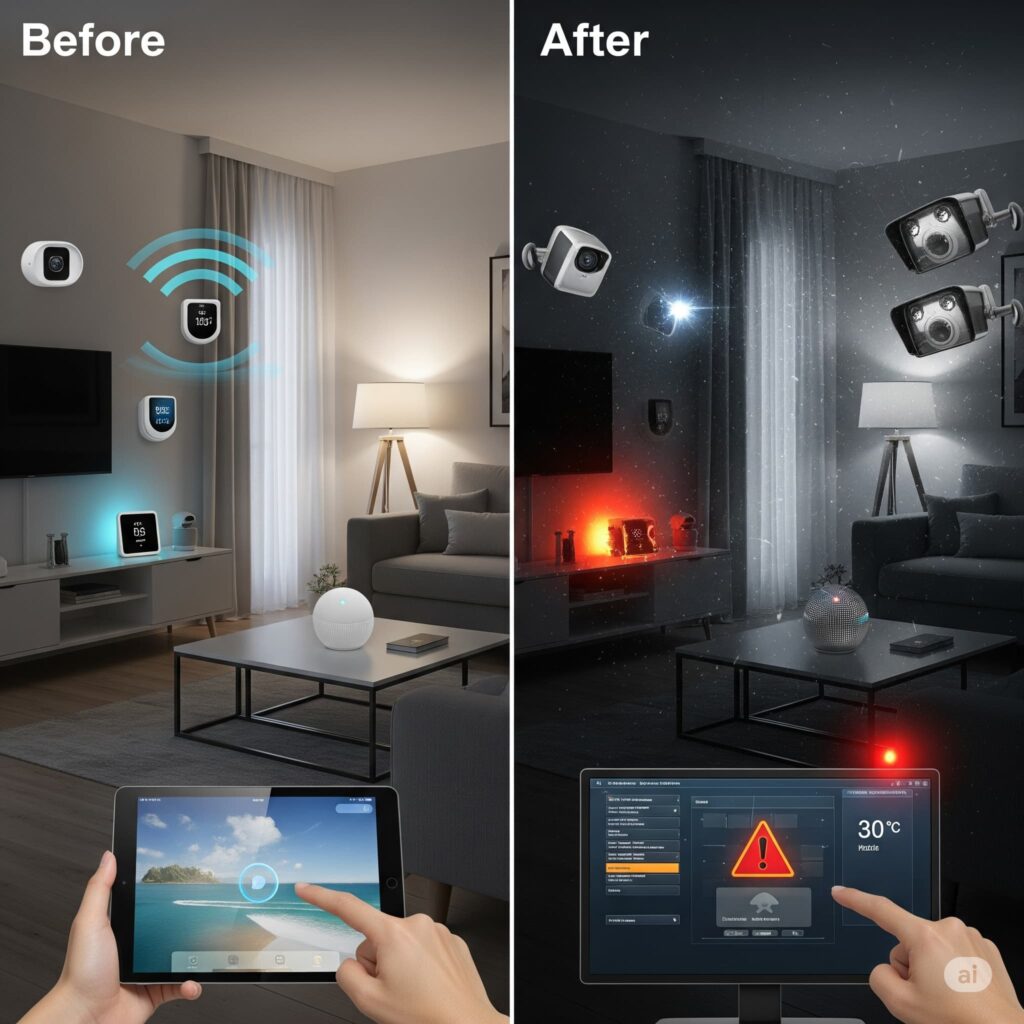
Smart homes are increasingly popular, promising convenience and efficiency. However, this convenience comes with a hidden price: increased security risks that many beginners overlook. This post explores these often-unseen vulnerabilities, providing you with the knowledge to protect your home and data.
Beyond the Obvious: Data Breaches and Privacy Concerns
While the threat of a burglar breaking into your home is obvious, the digital vulnerabilities of your smart home ecosystem are less apparent. Think about all the data your smart devices collect: your daily routines, your location, your sleep patterns, even your conversations if you use a smart speaker. This wealth of personal information is a tempting target for hackers.
The Weakness of Connected Devices
Most smart home devices connect to the internet through your home Wi-Fi network. This creates a single point of failure. If your Wi-Fi network is compromised, a hacker could potentially gain access to all your connected devices, including your smart locks, security cameras, and even your thermostat. This isn’t just about stealing your personal data; it’s about gaining control of your home.
Exploiting Software Vulnerabilities
Like any software, the firmware running on your smart devices can contain vulnerabilities. These are often overlooked by manufacturers, leaving your devices open to attack. Outdated firmware is particularly vulnerable, making regular updates crucial for security. Hackers can exploit these vulnerabilities to gain unauthorized access, install malware, or even remotely control your devices.
The Invisible Threat: Supply Chain Compromises
You might assume that once you buy a smart device, it’s safe. However, the security of your devices begins long before they reach your home. Supply chain compromises are a growing concern, where malicious actors tamper with devices during manufacturing or distribution. This could involve pre-installing malware or backdoors that allow access after the device is in your possession. You might never know your device is compromised.
Smart Home Hacks: Real-World Examples and Scenarios
It’s not just theoretical; smart home hacks are happening. Stories abound of hackers remotely controlling smart locks, disabling security systems, or even using smart TVs to eavesdrop on conversations. These aren’t isolated incidents; they highlight the very real dangers of unsecured smart home ecosystems.
Case Study: The Compromised Security Camera
Imagine your security camera, meant to protect your home, is actually compromised. A hacker could use it to spy on you, even recording your activities without your knowledge. This invasion of privacy is a serious consequence of poor security practices.
Scenario: The Remotely Controlled Thermostat
Consider a scenario where a hacker gains control of your smart thermostat. They could remotely turn it off in winter, leaving you without heat, or turn it up to maximum in summer, leading to high energy bills. These seemingly minor inconveniences can quickly escalate into significant problems.
Protecting Your Smart Home: Practical Steps You Can Take
The good news is that you can significantly reduce your risk by taking proactive steps. Don’t let the potential threats deter you from enjoying the benefits of a smart home; just be informed and vigilant.
- Strong Passwords: Use unique, strong passwords for each smart device and your Wi-Fi network. Avoid easily guessable passwords.
- Two-Factor Authentication (2FA): Enable 2FA wherever possible. This adds an extra layer of security, making it much harder for hackers to access your accounts.
- Regular Software Updates: Keep your devices’ firmware updated to the latest versions. These updates often include security patches that address vulnerabilities.
- Secure Your Wi-Fi Network: Use a strong password for your Wi-Fi, and enable WPA2 or WPA3 encryption.
- Choose Reputable Brands: Opt for smart devices from reputable brands with a proven track record of security.
- Limit Device Connections: Avoid connecting more devices than necessary to your network.
- Network Segmentation: Consider using separate networks for your smart home devices and your other devices, like laptops and smartphones.
- Regular Security Audits: Periodically review the security settings of your smart home devices and your network.
- Be Aware of Phishing: Be wary of suspicious emails or messages that may try to trick you into revealing your passwords or other sensitive information.
- Understand Your Privacy Settings: Review and adjust the privacy settings on your smart devices to control the data they collect and share.
Conclusion: Smart Homes, Smart Security
Smart home technology offers incredible convenience, but it’s crucial to understand the associated security risks. By taking the necessary precautions and staying informed about the latest threats, you can enjoy the benefits of a connected home while minimizing your vulnerability to cyberattacks. Remember, a little proactive effort goes a long way in protecting your home and your privacy.